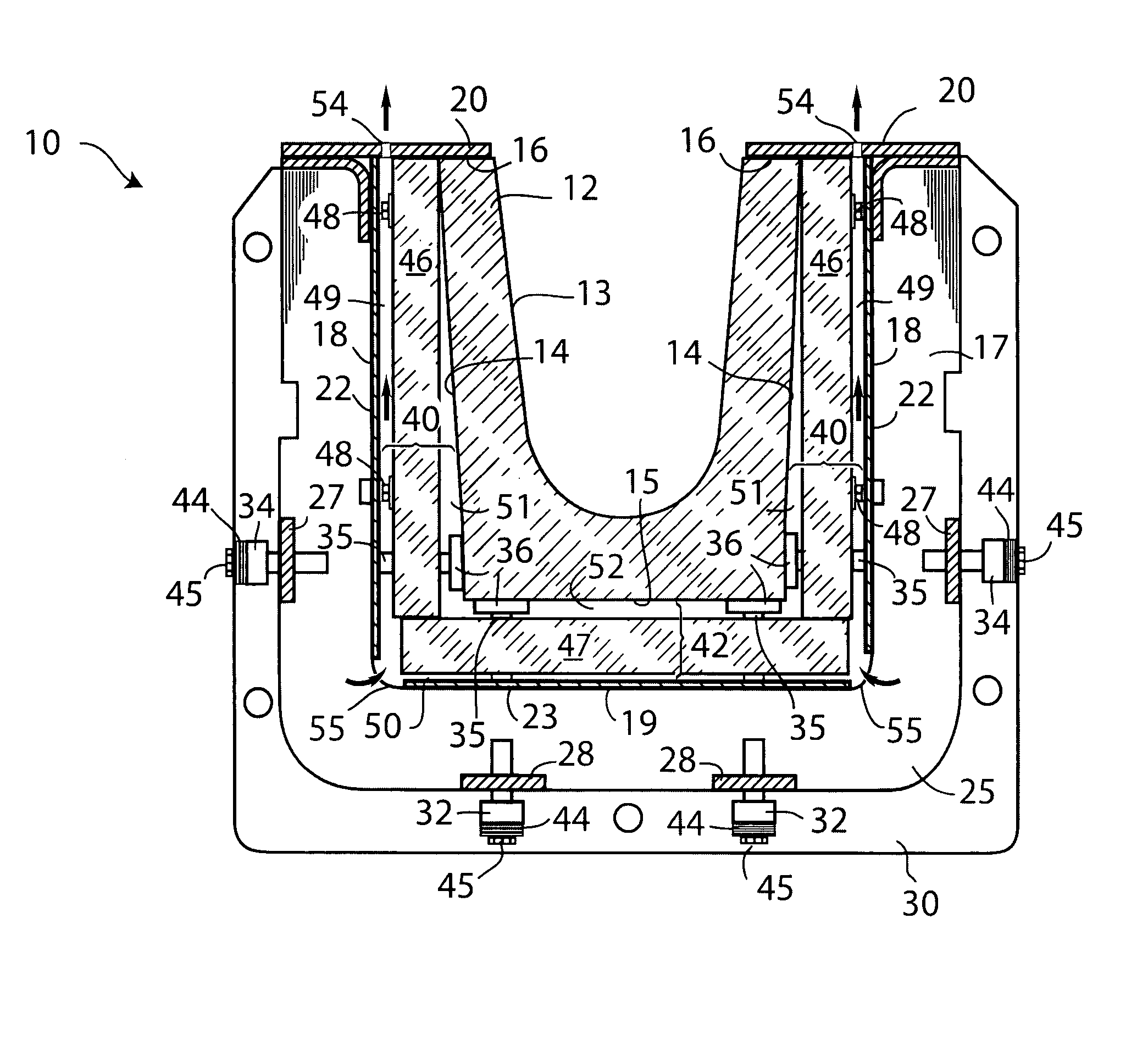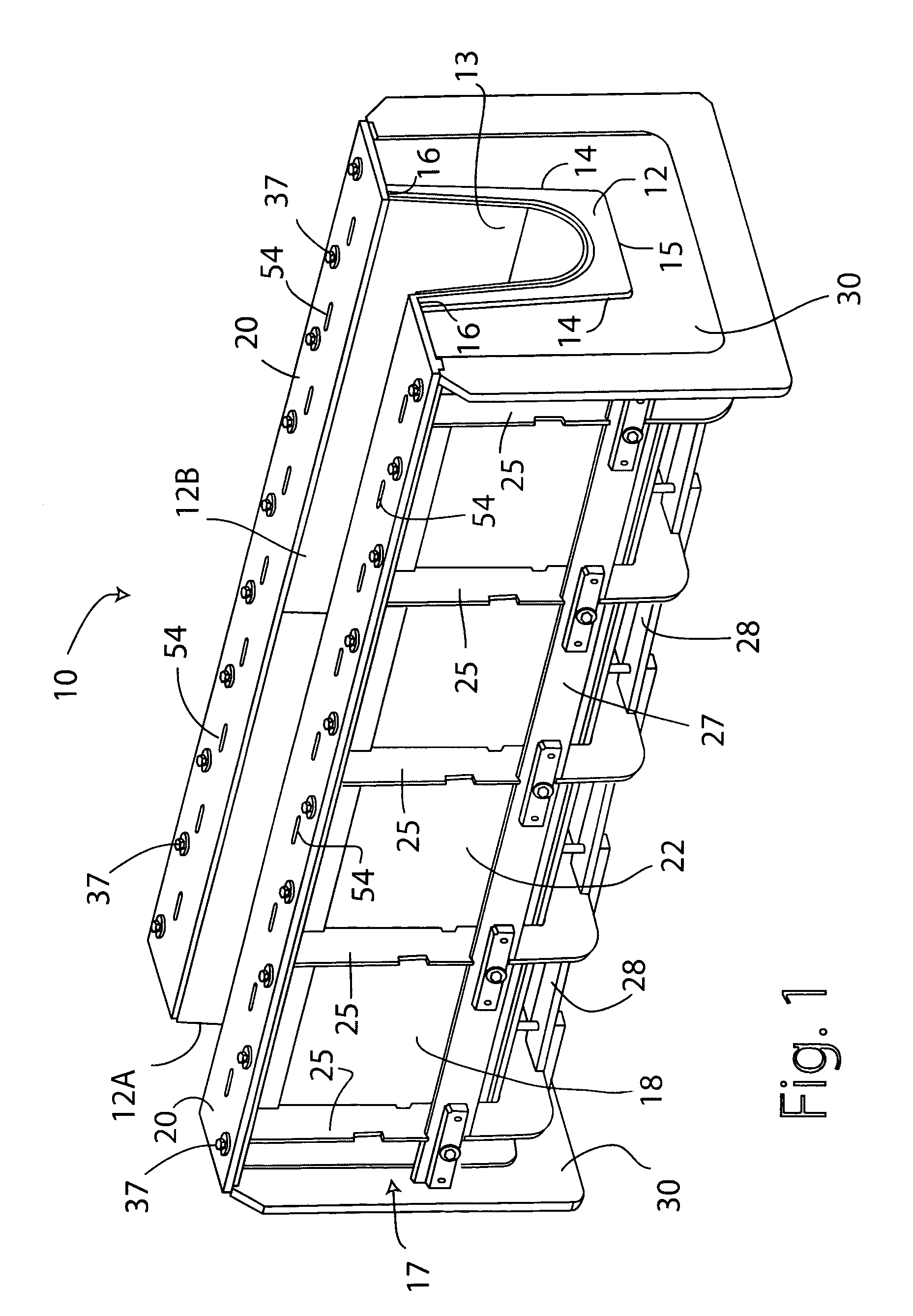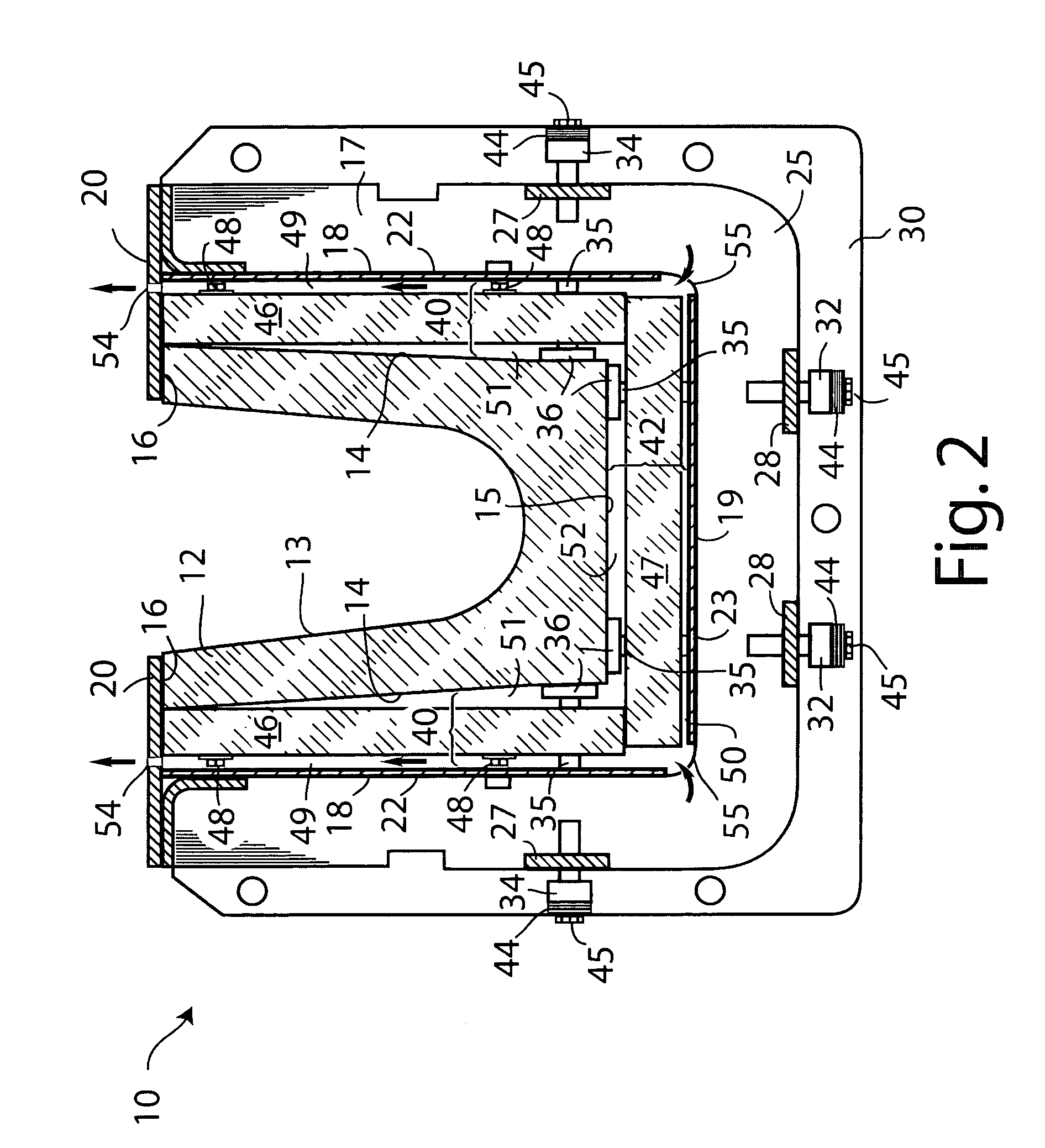Molten metal containment structure having flow through ventilation
a technology of containment structure and metal, which is applied in the direction of manufacturing converters, charge manipulation, furnaces, etc., can solve the problems of unsafe equipment operators' operating temperature, cracks in the vessel, and the refractory vessel may become extremely hot during use, so as to reduce the temperature of the casing, lower the melting point, and the effect of increasing the melting poin
- Summary
- Abstract
- Description
- Claims
- Application Information
AI Technical Summary
Benefits of technology
Problems solved by technology
Method used
Image
Examples
Embodiment Construction
[0008]An exemplary embodiment of the invention provides a molten metal containment (e.g. holding or distribution) structure including a refractory molten metal containment vessel having an external surface, and a metal casing for the vessel having an internal surface at least partially surrounding the external surface of the vessel at a distance therefrom forming a spacing between the vessel and the casing. The spacing includes an unobstructed upwardly extending gap that is vented to the exterior of the structure by upper and lower openings in the casing. Preferably, a layer of insulating material is positioned in the spacing between the internal surface of the casing and the external surface of the vessel, the layer of insulating material being narrower than the spacing at least at upwardly extending sides of the casing, thereby forming the unobstructed gap.
[0009]The unobstructed gap is preferably formed between the layer of insulating material and the internal surface of the metal...
PUM
| Property | Measurement | Unit |
|---|---|---|
| Flow rate | aaaaa | aaaaa |
| Structure | aaaaa | aaaaa |
| Volume | aaaaa | aaaaa |
Abstract
Description
Claims
Application Information
 Login to View More
Login to View More - R&D
- Intellectual Property
- Life Sciences
- Materials
- Tech Scout
- Unparalleled Data Quality
- Higher Quality Content
- 60% Fewer Hallucinations
Browse by: Latest US Patents, China's latest patents, Technical Efficacy Thesaurus, Application Domain, Technology Topic, Popular Technical Reports.
© 2025 PatSnap. All rights reserved.Legal|Privacy policy|Modern Slavery Act Transparency Statement|Sitemap|About US| Contact US: help@patsnap.com



